Do you have a question about the Honda 2002 Accord Coupe and is the answer not in the manual?
Overview of safety features designed to reduce injury severity during a crash.
Information on the importance, function, and proper wear of seat belts.
Guidance on correctly fastening and positioning seat belts for maximum protection.
Emphasizes the necessity of restraining all children in vehicles due to crash risks.
Recommends the back seat as the safest place for children due to airbag risks.
Highlights the dangers of front airbags to children due to their size and proximity.
Specific guidance for restraining infants, emphasizing rear-facing seats.
Advice for restraining small children in forward-facing seats, considering airbag hazards.
Guidance for larger children who have outgrown child seats, and risks from passenger airbags.
Steps for properly installing a child seat securely in the vehicle.
Detailed explanation of how the front airbags deploy and function.
Explanation of how side airbags deploy and function in side impacts.
Explanation of various indicator lights on the instrument panel.
Overview of the heating and cooling system controls.
Details on the automatic climate control system and vent adjustments.
Information on operating the radio, CD player, and cassette player.
Guidance on setting up the system for ventilation, heating, cooling, and defrosting.
Steps to remove fog from the inside of the windows.
How to put the Automatic Climate Control in fully-automatic mode.
Manually selecting functions while maintaining automatic control.
How to operate the cassette player, including Dolby noise reduction.
How to load and operate the CD changer.
Steps for loading multiple CDs and single CDs into the changer.
How to operate the radio, including changing bands and adjusting volume.
How to adjust Bass, Treble, Balance, and Fader settings.
How to operate the CD player, including disc insertion and track numbers.
How to load and operate the CD changer.
How to operate the cassette player, including tape direction indicator.
Information on the audio system's anti-theft feature and code entry.
How to engage and set the cruise control speed.
Safety guidelines for operating garage door openers and equipment.
Step-by-step procedure for training HomeLink to operate devices.
Procedure for synchronizing HomeLink with rolling code garage door openers.
How to train an already programmed button to operate a new device.
Instructions on how to erase all stored HomeLink codes.
Guidance on how to drive during the first 600 miles for reliability.
Information on the maximum load capacity for the car and cargo.
Daily checks and adjustments to perform before driving.
Procedures for starting the engine under various conditions.
Explanation of brake system design and wear indicators.
Information on the Traction Control System (TCS) operation.
Techniques and precautions for driving in rain, fog, and snow.
Guidelines and safety tips for towing a trailer.
Essential safety precautions for performing maintenance tasks.
General safety warnings for performing maintenance on the vehicle.
Schedules for regular and severe driving conditions.
Maintenance items and intervals for normal driving conditions.
Maintenance items and intervals for severe driving conditions.
Guidance on selecting the correct API grade and viscosity for engine oil.
Procedure for changing engine oil and filter, requiring special tools.
Instructions for adding coolant to the reserve tank and radiator.
Procedure for draining and refilling the cooling system with new coolant.
Importance of proper tire inflation for handling, wear, and safety.
Suitability of tires for winter conditions and requirements for snow tires/chains.
Precautions and limitations for using the compact spare tire.
Step-by-step instructions for changing a flat tire safely.
Troubleshooting steps based on sounds heard when turning the key.
Diagnosing issues when the starter motor doesn't operate normally.
Troubleshooting when the starter works but the engine won't run.
Procedure and precautions for jump starting a car with a booster battery.
Actions to take if the engine overheats, including safety warnings.
Meaning of the low oil pressure indicator and immediate actions.
What the charging system indicator means and how to address it.
Information on the engine's emissions control system warning light.
Meaning of the brake system indicator and actions to take.
Instructions and precautions for professional towing services.
Overview of systems controlling engine emissions like CO, NOx, and HC.
Information on readiness codes and procedures for emissions testing.
How to report vehicle safety defects to NHTSA and Honda.
| Brand | Honda |
|---|---|
| Model | 2002 Accord Coupe |
| Category | Automobile |
| Language | English |


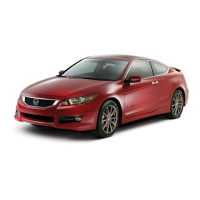
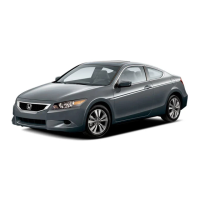
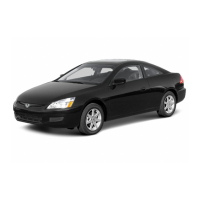
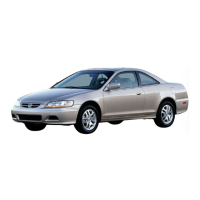
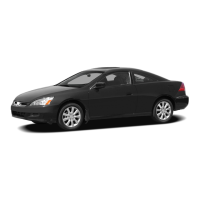
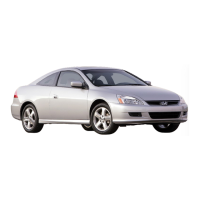
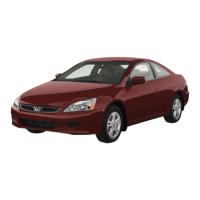

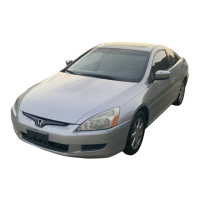

